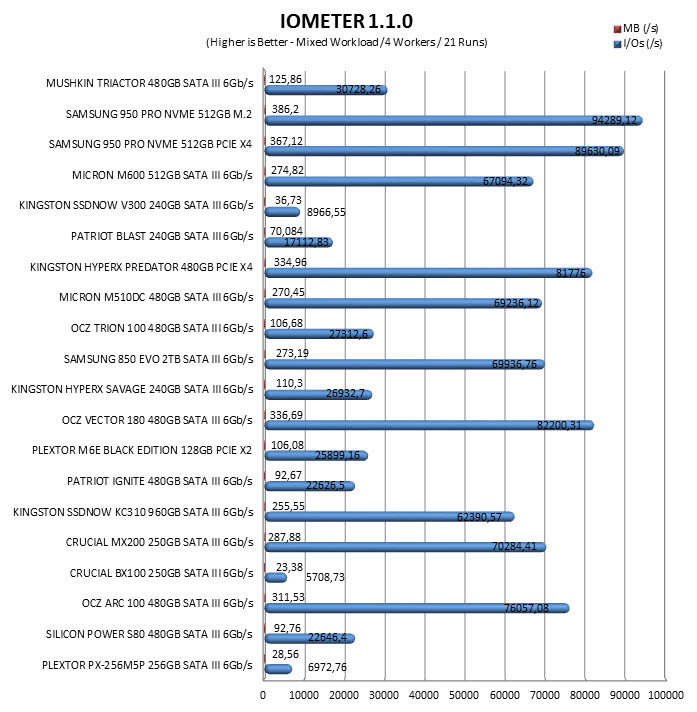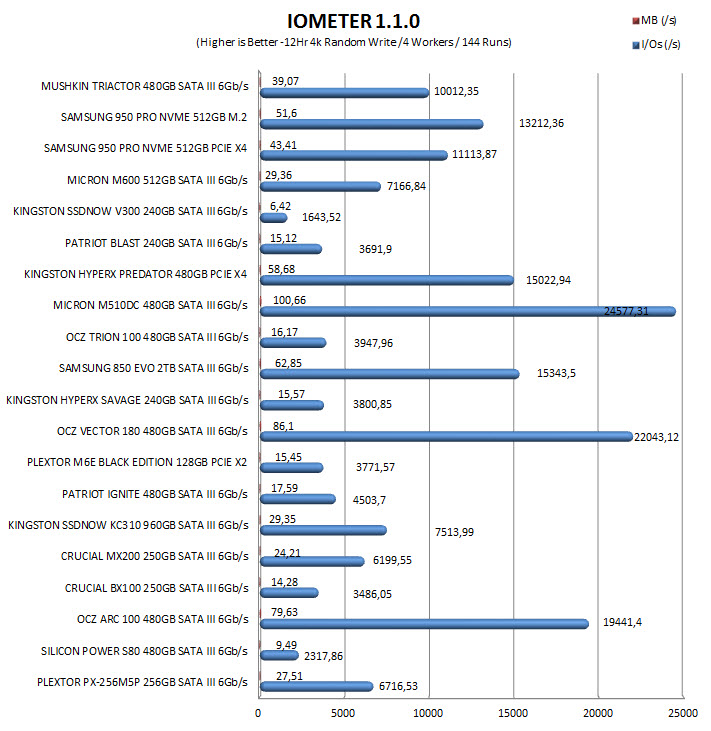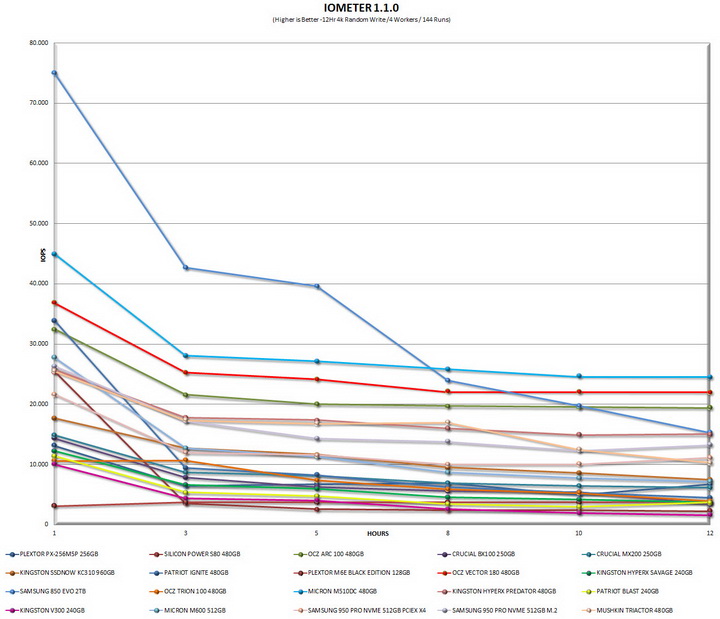INTRODUCTION

NVMe (Non-Volatile Memory) based SSDs may be the "hottest" thing in the storage industry right now (at least since the very first PCIe based solutions appeared several years ago) but it will be long before they'll be able to compete with regular models in price/capacity especially now that prices have taken another dive (also thanks to their introduction). Even so however that may not be enough for some people to get their hands on a high-performance and high-capacity model so in an effort to further reduce cost (and thus make SSD technology available for even entry level casual consumers) manufacturers have started launching models using lower-cost and performance NAND flash controllers and modules. The latest TRIACTOR line of SSDs by Mushkin was designed and manufactured with high price/capacity ratio in mind and today we're taking a closer look at the 480GB variant (and we're actually among the very first people to do so).
For nearly 20 years, Mushkin has been dedicated to helping overclockers, gamers, IT managers, digital artists and mobile professionals enhance their computing experience by providing reliable, high-performance products. Mushkin products include a line of Flash Memory-based products and complete selection of memory upgrades for desktops, notebooks and servers. Since the company’s founding in 1994, Mushkin has received numerous awards and commendations for quality, reliability and technical excellence.
Much like quite a few other manufacturers (for example ADATA and their SP550 SSD model) for this particular line of SSDs Mushkin decided to pair the latest SM2256A NAND flash controller by Silicon Motion with 1ZNM 256Gbit TLC NAND flash by SanDisk and 256MB LPDDR DRAM by Nanya. The SM2256A controller includes a single 32-bit Argonaut RISC processor core (same as its predecessor the SM2246EN) which in turn features their NANDXtend ECC technology (LDPC & RAID5-like data recovery) and supports DevSleep (power save feature), TRIM (garbage collection), SATA v3.1, AES-256bit hardware encryption and TCG Opal 2.0. TLC may not be as good as MLC or the "premium" SLC NAND flash both in terms of performance and durability but since Mushkin states that the TRIACTOR has an MTBF of 2 million hours we're at least "safe" in terms of longevity. As for performance we've tested several SSDs in the past featuring controllers by Silicon Motion and although we'd like to see more we are well aware that their excellent support (Silicon Motion also provides the firmware and updates for their controllers) is the reason as to why many SSD manufacturers choose to trust them. With that out of the way let's move forward and see just how good the latest Triactor 480GB SSD by Mushkin really is.
SPECIFICATIONS AND FEATURES

THE TRIACTOR 480GB
Once again Mushkin has used a clear plastic reusable package to ship the TRIACTOR SSD which allows you to take a look at the top.
The features and 3 year warranty for the SSD are all printed at a piece of cardboard placed inside the rear end of the package.
As expected the TRIACTOR 480GB SSD is nothing new in terms of design (the sticker at the top has the drive capacity, connectivity, serial and part numbers, product barcode and electrical requirements printed on it).
Nothing is found at the rear of the drive (the enclosure is held in place via 4 side screws).
The typical SATA III power and data connectors are located at the rear of the drive.
Once all 4 Philips screws are removed you can check the interior of the drive.
On one side of the PCB we see 8 1ZNM 256Gbit TLC NAND flash modules by SanDisk each 32GB in capacity.
Moving on the other side we see 8 more NAND flash modules (again 32GB each in capacity), the Nanya 256MB LPDDR DRAM module and the SM2256A SMI controller (a thermal pad was also placed over it to transfer heat onto the enclosure).
TEST BED


TESTING METHODOLOGY
After roughly 8 years of testing sold state drives i have concluded that it's almost impossible for any single benchmark suite to accurately measure their performance and that's why in certain benchmark suites we see amazing read/write performance numbers with some drives while in others things are quite different. The reason behind this is that some benchmarking suites are configured to read and write random chunks of data while others read and write constant (sequential) ones. So that's why i always use a very wide selection of benchmarking suites including AIDA64, HD Tach RW, HD Tune Pro, Crystal Disk Mark, Sisoftware Sandra Pro, AS SSD, IOmeter and ATTO. To get the most accurate results each test gets repeated a total of 6 times with the average performance numbers recorded into our charts. Also as of February 25th 2015 our results will also include the Storage Networking Industry Association’s (SNIA) IOMeter tests. These tests include a 12 Hour write test used to “simulate” performance degradation over time and a mixed workload test which basically shows what you can expect when using an SSD continuously for roughly two hours. Unfortunately due to the time required for these tests we repeat them a total of 3 times and not 6 as the above.
Many people have made inquiries about our charts in the past so once again please do keep in mind that the Charts have the average performance numbers of each drive recorded and not the peak (highest) ones. Also although every single one of these programs can help potential buyers choose the right drive for their needs you should also remember that from any kind of benchmark up to real world usage the gap is not small (and usually most differences will go unnoticed by most people). All tests were performed in a fresh Windows 7 Ultimate x64 installation with every update installed up to April 10th 2016.
TEST RESULTS - AIDA64 / ATTO


TEST RESULTS - HD TACH RW / HD TUNE PRO


TEST RESULTS - SISOFTWARE SANDRA PRO / CRYSTAL DISK MARK X64


TEST RESULTS – AS SSD / IOMETER


TEST RESULTS – IOMETER SNIA
CONCLUSION

Just like the TRION 100 by OCZ and the new BX200 by Crucial (review soon) it’s quite evident from our results that the TRIACTOR line of SSDs by Mushkin is obviously targeted towards casual consumers and gamers who aren’t really after the highest possible write performance. Also normally we all know that TLC NAND flash hasn’t got the highest durability ratings compared to MLC and SLC (that’s part as to why TLC 3D flash will probably replace TLC entirely in the following years – Silicon Motion already has the 2258 ready for that transition) but thanks to the NANDXtend technology featured in the SM2256A controller by Silicon Motion Mushkin can report a very high MTBF (Meantime Between Failures) of 2 million hours and so I don’t expect any problems in that area.
Since write performance is not the strong point of the new TRIACTOR 480GB SSD price is what can make it or “break” it and with a current price tag set at USD112.81 inside the USA (Amazon.com) and 112.81Euros inside the EU (Amazon.de) we really think Mushkin has a winner in their hands. There are certainly many faster models in the market but with an excellent price/capacity ratio (less than $0.24/GB), very good read and more than acceptable write performance numbers and a 2 million hours MTBF the TRIACTOR 480GB has the opportunity to become a best seller among casual consumers looking for an very affordable SSD and that’s why it gets our Golden Award.

PROS
- Excellent Price / Capacity Ratio (less than $0.24/GB)
- Read Performance Levels
- 3-Year Warranty
- Durability (2.0 Million Hours MTBF)
CONS
- Write Performance Levels

 O-Sense
O-Sense





















.png)

